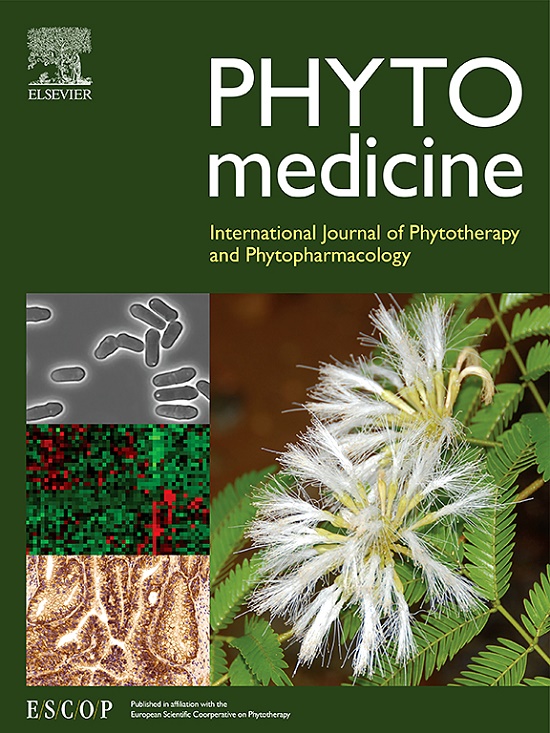Centipeda minima extract exhibits anti-liver cancer effects via the ER stress/HMOX1/Fe2+/ROS pathway
IF 6.7
1区 医学
Q1 CHEMISTRY, MEDICINAL
引用次数: 0
Abstract
Background
Centipeda minima (CM), also known as Ebushicao, has been traditionally utilized in Chinese medicine over thousands of years to address rhinitis, nasal allergies, and cancers. However, the active compounds and mechanism of CM against liver cancer have not been elucidated.
Purpose
To reveal the anticancer effects and the molecular mechanism of CM against liver cancer.
Methods
Compounds from the ethanolic extract of CM (ECM) were identified using UPLC-MS/MS. Two graded doses of ECM were introduced via gavage into mice bearing HepG2 cells for 24 days to evaluate its in vivo antitumor effects. Three doses of ECM were added to the cells to evaluate its in vitro anticancer effects via colony-formation, cell cycle, apoptosis, wound healing, transwell, western blot, and Fe2+ and ROS detection assays. Network pharmacology and RNA sequencing were conducted to examine the mechanism by which ECM affects liver cancer.
Results
ECM significantly arrested the cell cycle at G2/M, induced apoptosis, and impeded invasion and cell migration in liver cancer. In addition, ECM restrained tumor growth without affecting mouse weight. Mechanistically, ECM upregulated HMOX1 expression via ER stress, leading to accumulation of Fe2+, ROS, and cell apoptosis. Moreover, ECM impeded cell migration and invasion via downregulating N-cadherin (N-cad) and upregulating E-cadherin (E-cad).
Conclusion
ECM might restrain liver cancer progression primarily through the ER stress/HMOX1/Fe2+/ROS pathway, presenting a possible therapeutic strategy for managing liver cancer.
求助全文
约1分钟内获得全文
求助全文
来源期刊

Phytomedicine
医学-药学
CiteScore
10.30
自引率
5.10%
发文量
670
审稿时长
91 days
期刊介绍:
Phytomedicine is a therapy-oriented journal that publishes innovative studies on the efficacy, safety, quality, and mechanisms of action of specified plant extracts, phytopharmaceuticals, and their isolated constituents. This includes clinical, pharmacological, pharmacokinetic, and toxicological studies of herbal medicinal products, preparations, and purified compounds with defined and consistent quality, ensuring reproducible pharmacological activity. Founded in 1994, Phytomedicine aims to focus and stimulate research in this field and establish internationally accepted scientific standards for pharmacological studies, proof of clinical efficacy, and safety of phytomedicines.
 求助内容:
求助内容: 应助结果提醒方式:
应助结果提醒方式:


